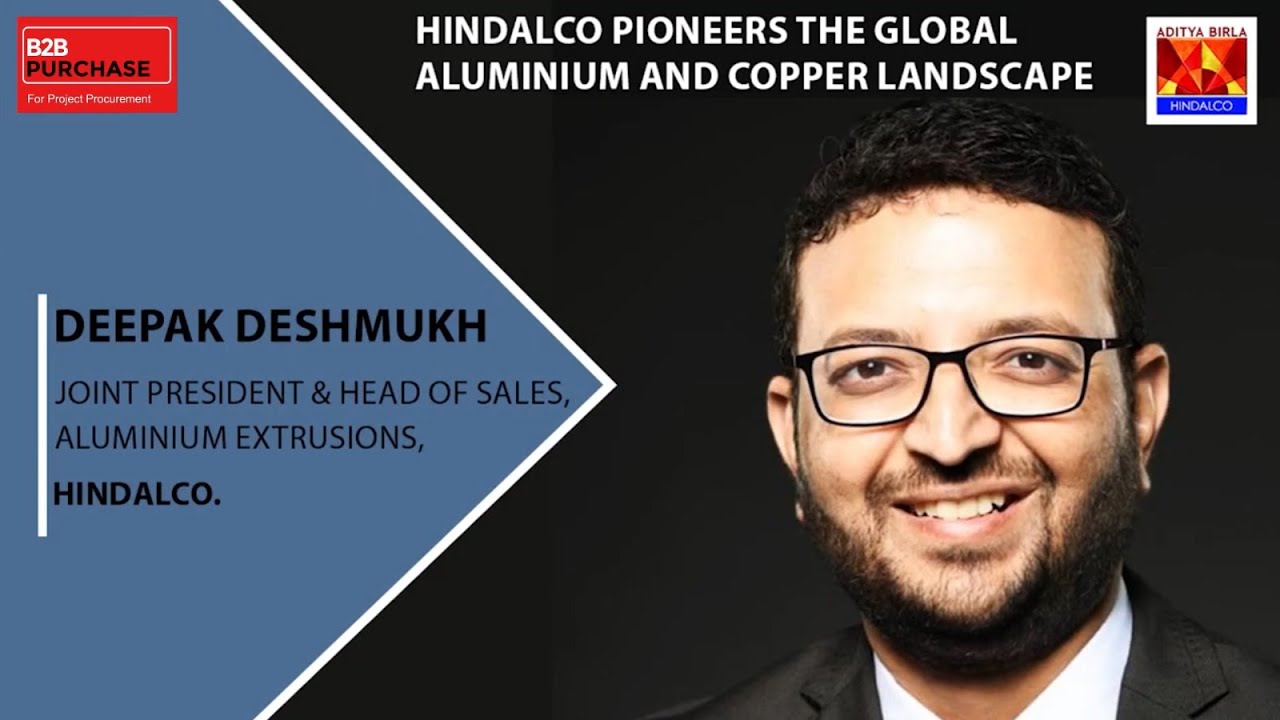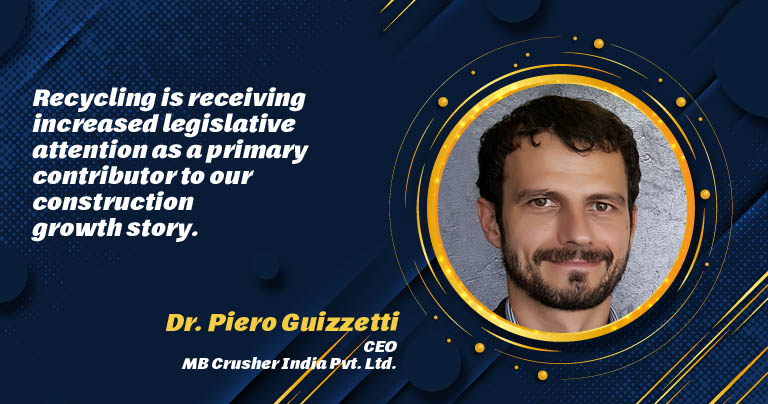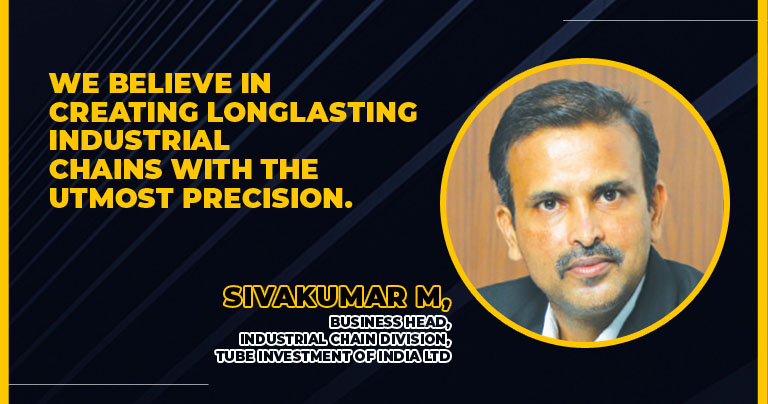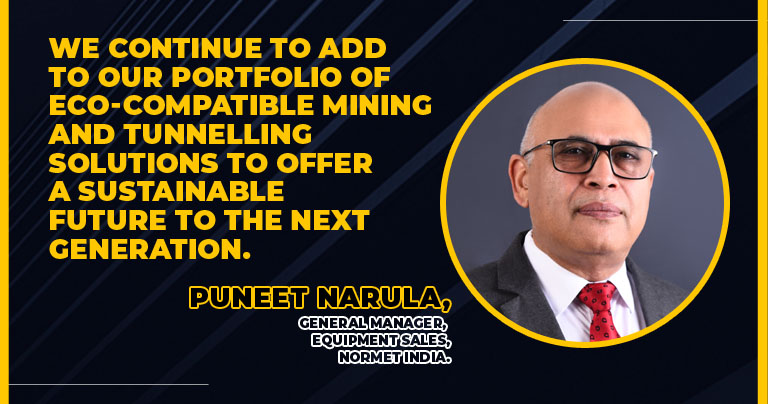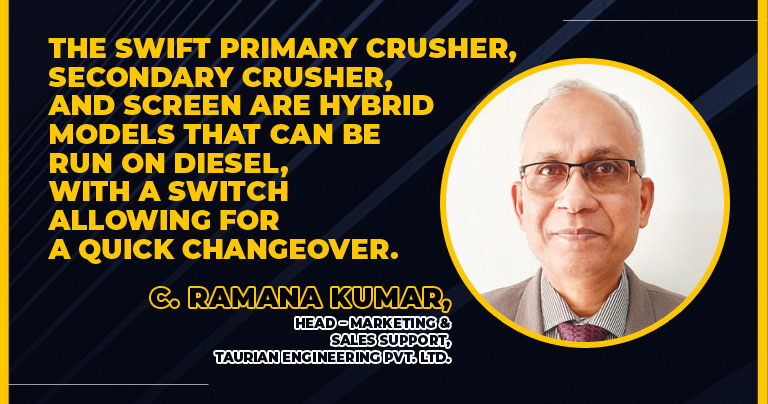There is a focus on diesel-electric power in the Indian crushing & screening industry
By Edit Team | June 16, 2022 2:44 pm SHARE
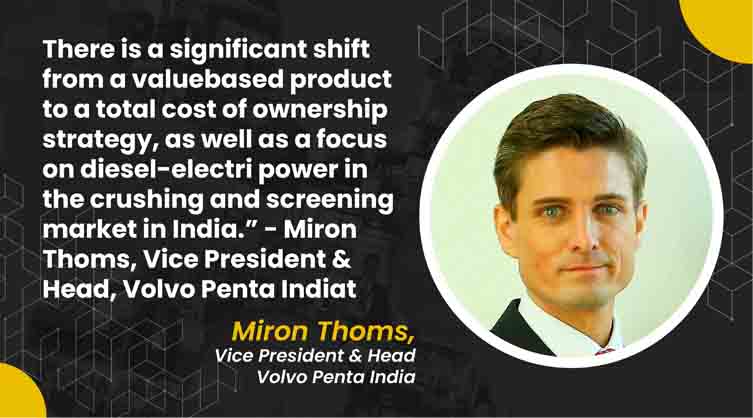
Miron Thoms, Vice President & Head Volvo Penta India. In an interview with B2B Purchase
For more than 20 years, the Volvo Group has had a strong presence in India. We have two factories in Bangalore for construction machinery and trucks in the south. In the north, we have a truck manufacturing plant and an engine plant with our joint venture company. In Indore, we manufacture the global medium-duty engine platform with 5 and 8-litre engines. So far, we’ve only had the off-road version of that engine available in India. Furthermore, we will launch an eight-litre engine for power generation made in India for the Indian market this year.” We produce the entire Volvo Group entire medium duty engine platform, which is distributed globally from India as a global manufacturing hub, “says Miron Thoms, Vice President & Head, Volvo Penta India.
Participation at Excon
We had two portfolios at Excon, including 8 litres to 16-litre engines for power generation and 5-litres to 16-litre engines for off-road machinery, both of which were heavily promoted during the event. Interestingly, the nearby and adjacent stalls around Volvo were powered by Volvo engines, which provided us with another source of pride. We used those five days to meet and greet our customers, as it was the first opportunity in 900 days to meet in person with our customers and stakeholders in one spot. It’s wonderful to be back here and meet our customers and their clients.
Products offered to Indian industries
The Indian market, in general, is dominated by domestic demand, and therefore, whatever is constructed in India, remains in India. A value based market makes up the majority of the market, while a premium market makes up a small portion. Because our products are the same across Europe, North America, and the rest of the world, we are concentrating solely on the premium market. Therefore, we provide the same services and benefits to all of our clients and stay behind our values.
In the last ten years, we’ve witnessed a significant transition from a value-based product to a total cost of ownership strategy. As a result, clients and customers are more concerned with costs per hour, operational costs, and uptime than with the machine’s initial cost. When we look at the service side of our business in India, we can see that the country has a greater rate of service contracts than any of our other global markets.
Compatibility with hybrid and electric machines
When we compare the Indian crusher market to the worldwide crusher market, we can see that India has a strong focus on diesel-electric drivelines. Interestingly, most of the stone crushing manufacturers that participated at Excon had Volvo engines installed in their equipment. The fundamental reason is that both engines run in a sweet spot that offers low costs per tonne of crushed raw material and provides environmental reliability.
Despite the fact that there are no pollution standards in India for this type of machinery, all Volvo Penta products are completely emission controlled.

The cost benefits of electronically controlled engines over traditional engines
When it comes to electromobility, I believe it will take some time to achieve not only efficient electric mobility but also to provide electricity. Coal power currently generates 65 percent of India’s electricity. Going electric, therefore, does not address the environmental issue.
The entire sustainability issue must be considered from an application standpoint. If we are in an area where the majority of the energy is not derived from fossil fuels, it makes sense to consider electromobility. The ultimate goal is not to have an electric driveline; the ultimate goal is to have a cleaner environment, and there are various concepts that we can consider, whereas electromobility is only one milestone.
Supply chain challenges
Nobody could have predicted the disruption and change in the supply chain and logistics sectors. On a global scale, we couldn’t have kept up with how quickly things went downhill and then bounced back. Nobody in the supply chain could have matched the speed with which the factories were shut down and restarted. However, supply chain control is nearly back to pre-pandemic levels.
Challenges to the supply chain still exist due to the global geopolitical situation but can be controlled to a great extent. To address such challenges, we must expand our production capacity and increase our supply to meet the ever-increasing market demand, and then we will be able to match the graph.
Cookie Consent
We use cookies to personalize your experience. By continuing to visit this website you agree to our Terms & Conditions, Privacy Policy and Cookie Policy.


